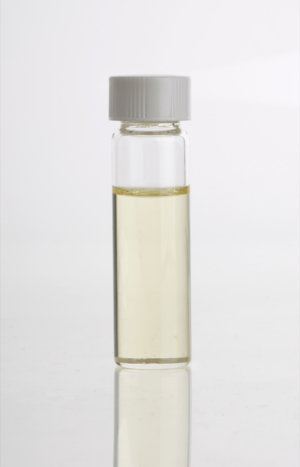Cajeput oil facts for kids
Cajuput oil is a special kind of oil that comes from certain trees. It is made from the leaves of trees like Melaleuca leucadendra and Melaleuca cajuputi. These trees are found in places like Maritime Southeast Asia and Australia. Most cajuput oil is made on the Indonesian island of Sulawesi. The name "cajuput" comes from the Malay words "kayu putih," which mean "white wood."
Contents
How Cajuput Oil is Made and Used
Cajuput oil is made from the leaves and small branches of the cajuput tree. First, these parts are soaked in water. Then, they are left to ferment, which means they sit for a night. After that, the oil is taken out using a process called steam distillation. This is like using steam to separate the oil from the plant material.
The oil that results is very strong-smelling and can catch fire easily. It smells a bit like a mix of turpentine, eucalyptus, and camphor. Cajuput oil is mostly made of a chemical called cineol. People use this oil in small amounts, similar to how clove oil is used.
Medicinal Uses of Cajuput Oil
Cajuput oil can help with pain by making the skin feel warm and a little irritated. This happens because of the chemical cineol inside the oil. It is often used on the skin to help with different aches and pains.
You might find cajuput oil in some muscle rubs like Tiger Balm. It is also used in traditional Indonesian medicine called Minyak Telon. Some inhalers and pain remedies, like Olbas Oil, also contain cajuput oil.
For direct use, cajuput oil can be put on small cuts, scratches, or rashes. However, it's important to do a patch test first. This means putting a tiny bit on a small area of skin to see if you have a bad reaction. Cajuput oil can also be mixed with other liquids, like antiseptic lotions, to help with rheumatism or even with shampoo for hair care.
Possible Benefits of Cajuput Oil
Even though essential oils like cajuput oil are not checked by the Food and Drug Administration (FDA), many people believe they have benefits.
- For Skin: Research suggests cajuput oil may have antiseptic and antibacterial qualities. This means it can help clean minor cuts and scratches and stop infections.
- Skin Conditions: It might also help with skin problems like psoriasis and acne by reducing swelling. However, more research is needed to be sure about this.
- Other Uses: People also say cajuput oil can help with things like toothaches, sore muscles, joint pain, sinusitis, the common cold, coughs, anxiety, and stress.
Potential Side Effects
Like other essential oils, cajuput oil can cause some side effects, especially on the skin. These can include:
- Skin rashes
- Redness
- Irritation
- Burning feeling
- Hives (itchy red bumps)
If you use cajuput oil on your skin, it should usually be mixed with a carrier oil first. A carrier oil is a milder oil, like coconut or jojoba oil, that helps dilute the strong essential oil. Experts suggest starting with a few drops of cajuput oil per ounce of carrier oil. If your skin isn't sensitive, you can slowly use a bit more.
It's also important to avoid breathing in cajuput oil directly. It is very strong and can cause or make breathing problems worse. This is especially true for pregnant or breastfeeding women, young children, and pets.
Cajuput Oil for Fish
Cajuput oil is also used to treat bacterial or fungal infections in fish. Some well-known products for fish that contain cajuput oil are Melafix and Bettafix. Melafix is a stronger version, while Bettafix is weaker. This makes Bettafix safer for smaller fish, especially bettas, as it's harder to give them too much.
This oil is most often used to help fish grow back their fins and other tissues. It is also good for treating conditions like fin rot or velvet disease. It is very popular for use with betta fish.
See also
 In Spanish: Aceite de cajeput para niños
In Spanish: Aceite de cajeput para niños


